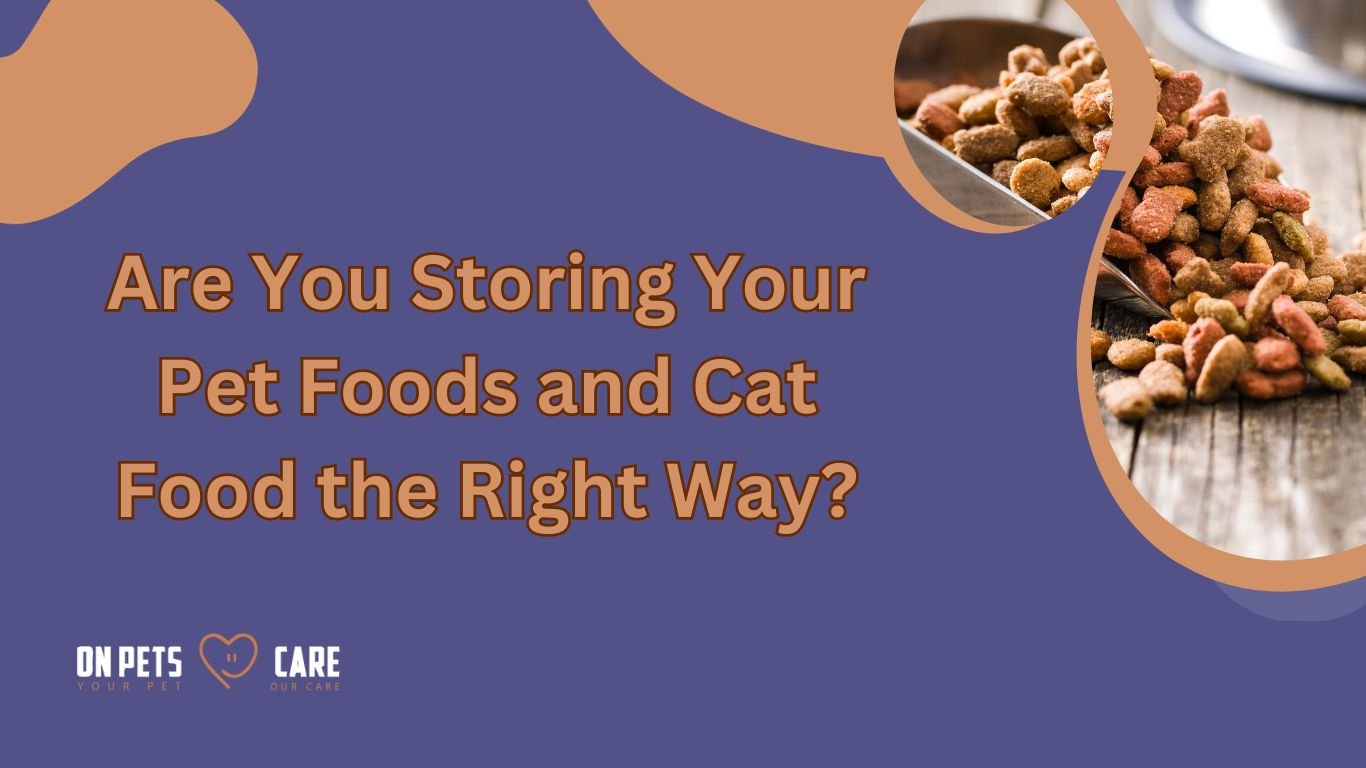Are You Storing Your Pet Foods and Cat Food the Right Way?
When it comes to taking care of our beloved pet food storing technique we often focus on their diet, making sure they get the best nutrition possible. But have you ever stopped to consider if you’re storing your Pet foods correctly? In this article, we’ll dive deep into the world of pet food storage, with a particular focus on Cat food storage techniques. Whether you have a feline friend or a loyal canine companion, the way you store their food can impact their health and well-being.
Welcome to a world where the health and happiness of your furry companions are our top priorities. In this informative journey, we’ll be delving into the intricacies of pet foods and the art of pet food storing technique. At Onpets Care, we understand that your pets are more than just animals; they’re cherished members of your family. That’s why we’re here to guide you on the path to providing them with the best nutrition and care possible. So, let’s embark on this adventure of discovery, ensuring that your pets receive the love and attention they truly deserve.
Understanding the Importance of Proper Pet Food Storage
1. Why Does Pet Food Storage Matter?
When it comes to your pets’ nutrition, you don’t want to compromise. Proper storage of Pet food ensures that it remains fresh and free from contaminants, safeguarding your pets’ health.
2. The Role of Ingredients in Pet Food
Delve into the ingredients used in Pet food and how proper storage can preserve their nutritional value.
3. Avoiding Common Mistakes
Explore common mistakes pet owners make when storing food and how these can affect your furry friends.
4. The Impact of Humidity
Learn how humidity can be a hidden enemy when it comes to Pet food storage, and discover effective ways to combat it.
Storing Dog Food: Best Practices
**5. The Dog Food Container
Discover the ideal type of container for storing Dog food and how it can keep kibble fresh and appetizing.
6. The Importance of Sealing
Understand the significance of airtight seals in dog food containers and why they matter.
7. Keep It Cool
Find out how temperature affects the quality of dog food and why you should store it in a cool, dry place.
pet food storing technique
8. The Unique Challenges of Cat Food Storage
Delve into the specific challenges that cat owners face when storing their feline friends’ cat food.
9. Airtight Containers for Cat Food
Explore why airtight containers are a game-changer for cat food storage and which ones are the best on the market.
10. Portion Control
Learn the importance of portion control for your cat’s meals and how it relates to storage.
11. Avoiding Odors
Discover how to prevent unpleasant odors from permeating your home when storing cat food.
Onpets Care: Beyond Food Storage
12. The Holistic Approach
Explore the broader concept of pet care, including mental stimulation, exercise, and companionship, alongside proper food storage.
13. Selecting the Right Pet Food
Understand how to choose the best pet food for your furry friend, taking into account their specific needs and preferences.
14. Maintaining a Healthy Diet
Learn about the importance of a balanced diet and how it contributes to your pet’s overall well-being.
15. Conclusion: Your Pet’s Happiness is in Your Hands
Sum up the key takeaways from this article and emphasize the crucial role pet food storage plays in ensuring your pet’s happiness and health.
Now that we’ve covered the ins and outs of pet food storage, it’s time to put this knowledge into practice. Onpets Care, Remember, the well-being of your furry friend depends on your choices. By following the right cat food storing techniques and applying these principles to dog food storage, you can ensure that your pets enjoy delicious and nutritious meals every day.
FAQs – Your Questions Answered
1. Can I use the original pet food bag for storage?
While it’s not ideal, you can use the original bag if you keep it sealed and place it inside an airtight container to prevent moisture and pests from getting in.
2. How often should I clean the pet food container?
Ideally, clean the container each time you refill it to prevent the build-up of bacteria and mold.
3. Is freezing pet food a good idea for long-term storage?
Freezing can be an option for long-term storage, but make sure to use airtight freezer-safe containers to maintain freshness.
4. What should I do if my pet’s food smells bad after storage?
If the food smells bad, it may be spoiled or contaminated. Dispose of it properly and clean the storage container thoroughly.
5. Can I mix old and new pet food in the same container?
Mixing old and new food is generally not recommended, as it can lead to spoilage and loss of nutritional value. Finish the old batch before starting a new one.
Remember, your pet relies on you for their well-being. By following these guidelines, you can ensure that you’re storing their pet food properly and giving them the best care possible. Your furry friend will thank you with love and affection for years to come.



